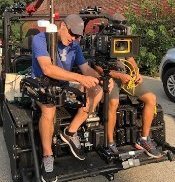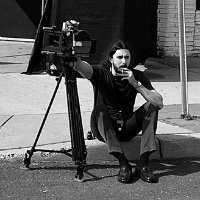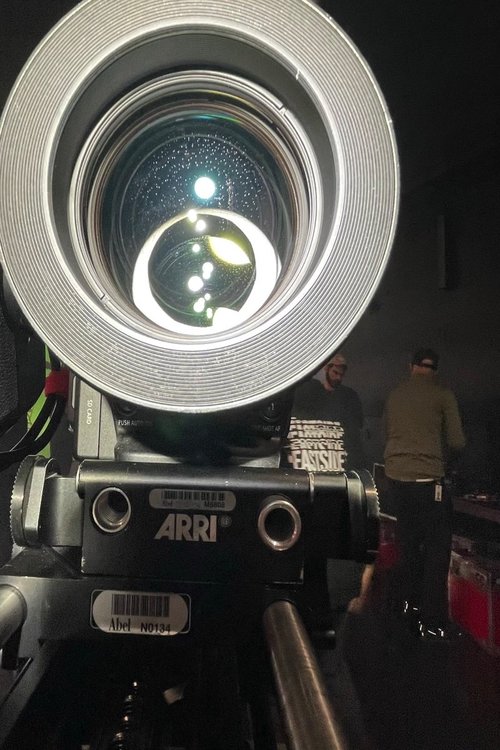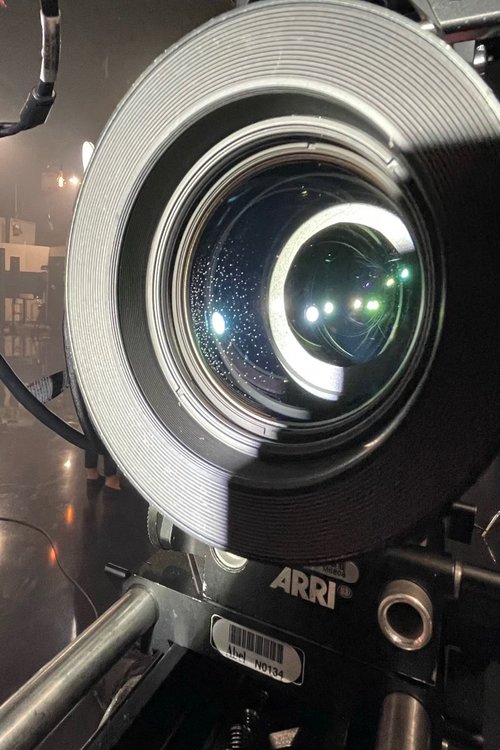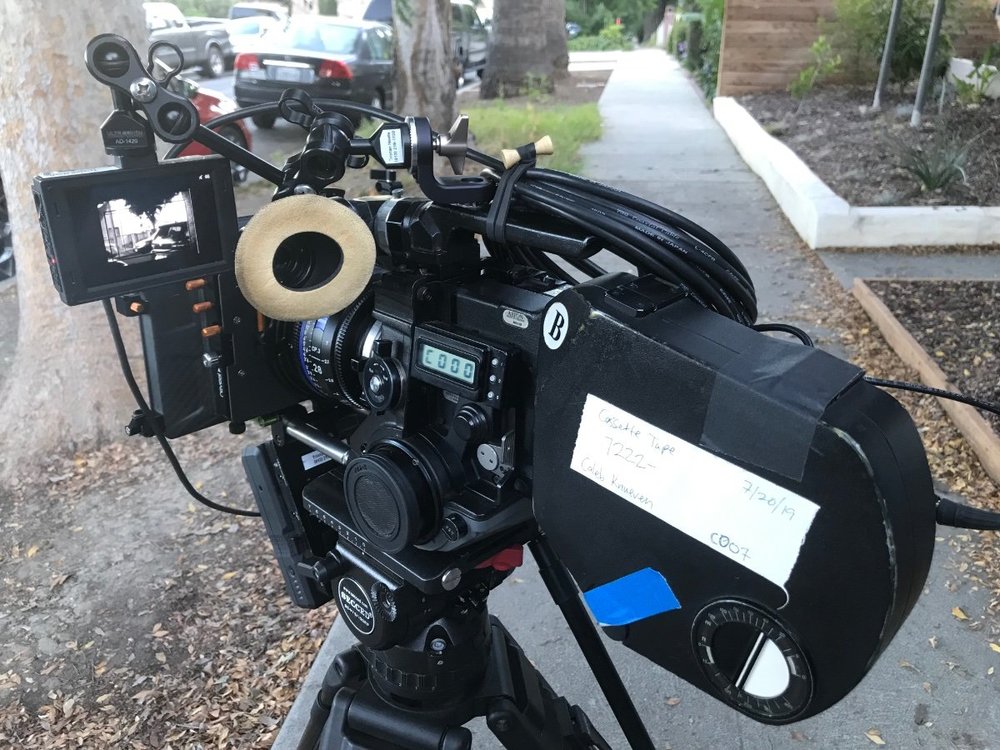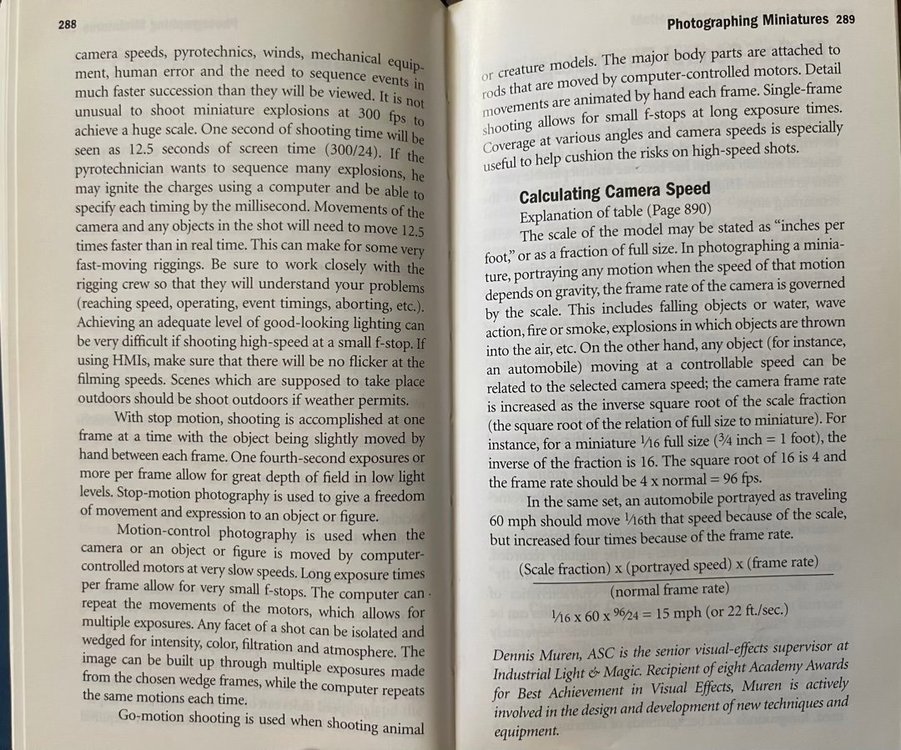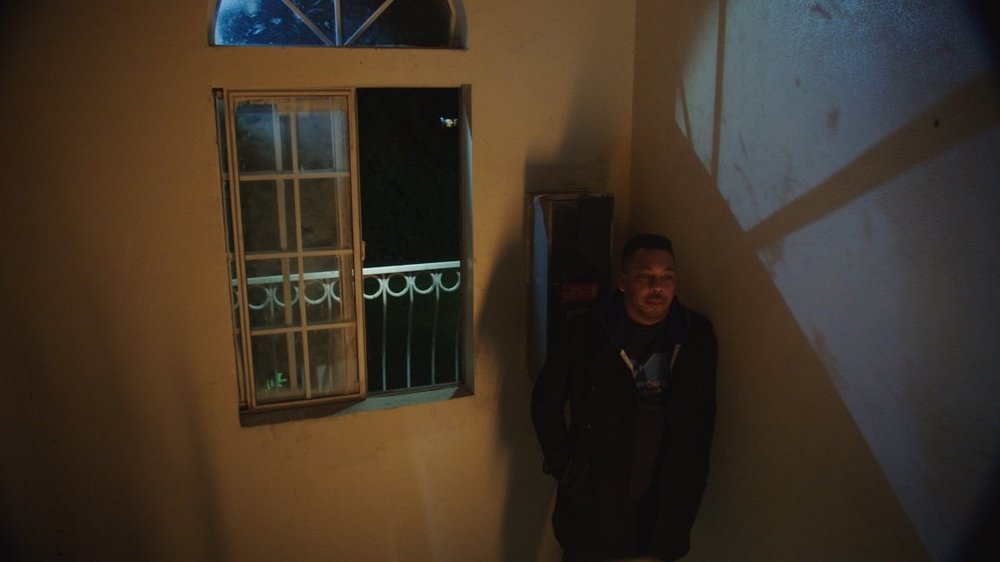-
Posts
99 -
Joined
-
Last visited
About Tristan Noelle

- Birthday 04/04/1983
Profile Information
-
Occupation
Cinematographer
-
Location
North Hollywood, CA
Contact Methods
-
Website URL
http://tristannoelle.com
Recent Profile Visitors
-
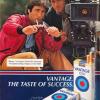
Is The Fluid Head Obsolete?
Tristan Noelle replied to Marcos Cooper's topic in Camera Operating & Gear
I think there’s something to be said for the operator being “in” the scene in a way, close to the performances. A remote head operated from video village for normal scenes is capable of doing what a fluid head and operator can do, but I find it useful to have an eyeline to the actors outside of the viewfinder and monitor for matching and anticipating movement in some scenes, like when actors are loose with marks or go off book.- 18 replies
-
- tripod
- fluid head
-
(and 2 more)
Tagged with:
-

How to attach titan tubes to tile walls
Tristan Noelle replied to Gerrit Fahr's topic in Lighting for Film & Video
I’ve had luck with Nano Tape, it’s a thick double sided material that grabs smooth surfaces really well. I usually use it overhead but it should work on a wall. It’s cheap enough that replacing it should be easy. May want to test it out. -Tristan https://www.amazon.com/Multipurpose-Removable-Mounting-Traceless-Decoration/dp/B0B7WZZV3Z/ref=mp_s_a_1_1_sspa?crid=WCD500BQ6ELL&keywords=nano+tape&qid=1696466158&sprefix=nano+tape%2Caps%2C146&sr=8-1-spons&sp_csd=d2lkZ2V0TmFtZT1zcF9waG9uZV9zZWFyY2hfYXRm&psc=1 -
I was operating camera the other day for a performance. We all were on different focal length Ultra Primes, straight from the same rental house. The 100mm I was on was noticeably more prone to flaring than the other focal lengths and had reduced contrast with brighter scenes. I took a photo of the lens with a light shining on it and noticed the pictured spots. It didn’t look like the spots were on the front element, but deeper in (I could be mistaken). And I didn’t get a chance try and clean it. Any thoughts on what it could have been? -Tristan
-

Questions about AATON XTR and Monitor
Tristan Noelle replied to Zichen Chang's topic in General Discussion
Here’s a few photos of the kind of clumsy setup I cobbled together for the last short I did on an Aaton XTR Plus. I would do it cleaner this time around. We ran the Aaton tap into a Blackmagic Analog to SDI converter taped to the mag, then out to my small viewfinder, a Cineroid EVF4. We powered both from a V mount battery and plate on the front rods. Not just any modern monitor will work though, you need something that will display SD resolution (some Atmos won’t), so check it’s specs. -Tristan -
For most of my gripping needs I use 3/8” White Diamond Multiline from New England Rope Company. Comes on a 600’ spool. Some fancier grip crews use the black line, but I usually don’t have cause to justify the added expense. Works well for general rigging, hanging softboxes, tying off frames, guy lines, etc. Tristan https://www.hollywoodexpendables.com/product/multi-line-black-38x600/
-

Good Literature for Miniature Photography
Tristan Noelle replied to M Joel W's topic in Visual Effects Cinematography
I was just looking into miniature work for a music video I have coming up. Here’s the miniature section from the American Cinematographer Manual, 8th Edition. It’s only a few pages. I’d also recommend “The Technique of Special Effects Cinematography” by Raymond Fielding. It has a good section on miniature work. I know there are people now doing really impressive miniature work online and documenting it on Vimeo and YouTube, which would be more relevant to the newer post tools we have for retiming and compositing. -Tristan -
Granted I’m in LA, but in April I spent a week calling around to a bunch of stores and eventually found an FX9 that had just arrived at Samy’s. Went in the same day and bought it. Also I’m still getting calls from Filmtools telling me when they have an FX9 in stock. So if you’re proactive and have your financing sorted, you may get lucky too. -Tristan
-
Although it’s not strictly “all” in focus, they use some longer lenses in spots and some racks, John Frankenheimer’s “The Train” (1964) strikes me as almost completely sharp. It has an almost brutalist aesthetic that compliments the focus on war and machinery. Very good movie too. -Tristan
-

Vignette on Cooke Varotal 20-100
Tristan Noelle replied to Tristan Noelle's topic in Lenses & Lens Accessories
Thanks for your insight, Dom, that all makes sense. The Alexa PL mount seemed solidly in place, but it was a rental so who knows. If I can get the lens serviced before I shoot again, I’ll see if that changes anything. -
I was doing some tests around my apartment with a Cooke 20-100 Zoom on an Alexa Mini (4K UHD 16:9) and noticed a hard vignette at the 20mm end on the frame right side. When I zoom in a little bit, the vignette becomes more of a shading which is closer to what I expected. Stopping down didn’t help (shot is at F/3.1) and playing with rear filter holder didn’t change anything. Is this related to being centered for Academy rather than Super 35? Or is it likely due to not being maintained? The lens has been sitting on a shelf for a long time, hasn’t really been serviced, but operated okay for my tests, no binding or catching, etc -Tristan
-
Kind of looks like a Tamiya or Mini Tamiya, which are often used in RC car batteries or Paintball/Airsoft applications. Not sure though. -Tristan
-
Looks like grip department mission creep. Could be the sunlight was changing, initially being blocked by the large frame, but then the 4x’s were needed to block hotspots that cropped up. Space or time would have made it difficult to set up a larger frame. Or they were using the diff frames as nets and flags, shading parts of the frame. All in all, hard to say. I doubt it was diagramed that way.
-

WHATS THE BEST TUNGSTEN "CHINA BALL" LANTERN?
Tristan Noelle replied to Nicky Shotz's topic in Lighting for Film & Video
That looks like a Chimera pancake lantern, which is kind of a flattened out jem ball. https://www.bhphotovideo.com/c/product/218652-REG/Chimera_1865_Pancake_Lantern_Softbox_with.html - Tristan -

WHATS THE BEST TUNGSTEN "CHINA BALL" LANTERN?
Tristan Noelle replied to Nicky Shotz's topic in Lighting for Film & Video
There’s a few options. The Jem Ball is a good. It needs to be rigged to a gobo head and comes in several sizes. They have different diffusion options and modifiers to skirt and control them. The large ones can take a 2k mogul bulb. Also have harps to fit Joker hmis. http://www.jemlighting.com/products.html More bare bones is the lantern lock, which is a wired harp that fits regular paper lanterns. Again, needs to be rigged to a head or arm and is heavier than a traditional lantern. https://www.filmtools.com/lanternlock-24-mogul-socket.html For what it’s worth, an electric who worked on “Carol” told me that Ed Lachman had them use just regular off the shelf paper lanterns with porcelain sockets to take photoflood bulbs, often hung with wire and string, and skirted with super light black vinyl tablecloth material. He may have used actual lantern lock or similar for more control on some shots. https://www.partycity.com/black-plastic-table-cover-roll-with-slide-cutter-54in-x-126ft-924455.html I like the lightness and easy-to-hang nature of paper lanterns, so often opt for the plain ones that I can rig anywhere with my own sockets. But if you’re looking for a more controllable option and value the quality of the light over it’s simplicity, then the Jem ball is very effective. -Tristan Noelle -
This might be slightly paranoid, but... I think some productions will send a “Call Email” with limited info on it because one of the ways shows in production are flipped union is by forwarding call sheets to your respective hall or rep. I mean, you probably still have enough info to get them flipping it, but the call sheet gives them everything at a glance.




